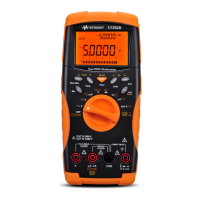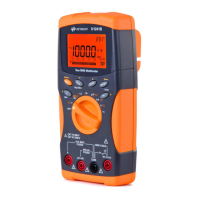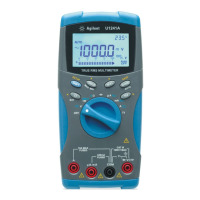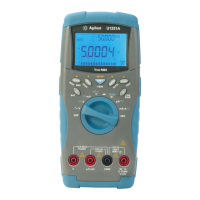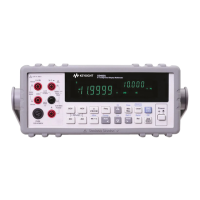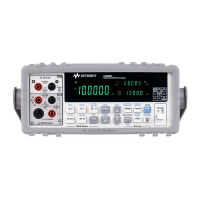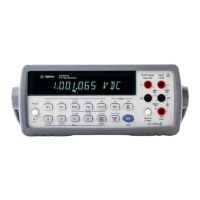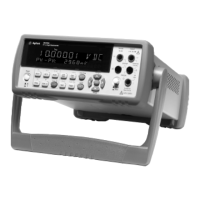Making Measurements 2
Measuring AC or DC Current
U1231A/U1232A/U1233A User’s Guide 61
Using the μA function to measure flame rectification circuits
The multimeter’s μA measurement function can be used to
measure flame rectification circuits (flame sensors) down to
0.01 μA.
Flame sensors, whether they are used in a home furnace or
on a large industrial boiler, indicate the presence of a flame
and are part of the safety circuit. These types of flame
sensors use a process of flame rectification to sense that the
flame is lit. Typically, these flame sensors must be engulfed
in the burner flame to function.
Flame rectification uses the fact that a flame will rectify an
AC voltage to DC voltage and allow the DC current to flow
through a flame to detect a flame.
Normally, an AC voltage is applied to the flame sensor with
a wire coming from the ignition module. When the flame
sensor is engulfed by a flame, the AC voltage is rectified and
a DC current, commonly 4 to 12 μA, flows from the ignition
module through the wire to the flame sensor, through the
flame to the ground on the furnace chassis.
The ignition control module has a circuit to detect the DC
current, and it commonly closes a relay when the DC
current is detected, that verifies that the burner is properly
lit. If the burner fails to light or is extinguished for any
reason, that DC current disappears and the control module
takes suitable action to turn off the burner.
To measure flame rectification circuits:
1 Set up your multimeter to measure μA measurements as
shown in Figure 2- 25.
2 Connect the multimeter between the flame sensor probe
(COM terminal) and the ignition control module (mA
terminal).
3 Probe the test points and read the display.
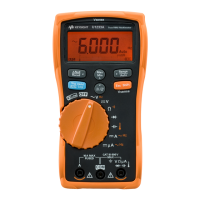
